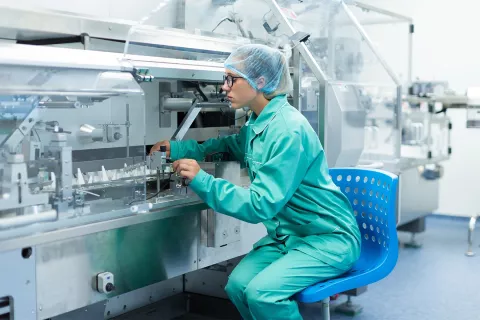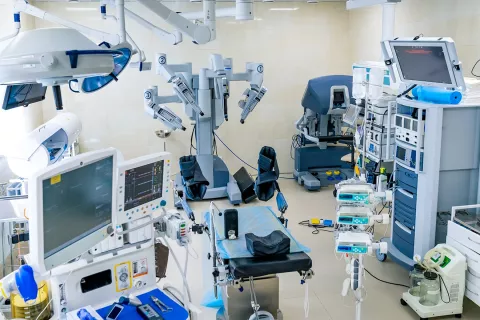One may think that placing a medical device on the market is the final step; however, even after the device’s launch, the manufacturer is required to fulfill the Post-Market Surveillance (PMS) requirements. PMS involves activities to collect and evaluate the feedback/complaints related to the quality, performance, and safety of the devices, user surveys, technical and clinical watch, surveillance of competing devices throughout the device’s lifetime and take any corrective actions if necessary. The entire purpose of the PMS is to ensure the safety and efficacy of the patients and/or other relevant users of the devices.
In the European Union (EU), with the implementation of Medical Device Regulations (MDR) 2017/745 and In Vitro Diagnostic Medical Device Regulations (IVDR) 2017/746, the PMS requirements have also been redesigned. Currently, Chapter VII of MDR and IVDR covers the post-market surveillance requirements.
The first and foremost step that the manufacturers are required to do as a part of a PMS activity is to draw up a PMS plan which is one of the crucial elements in the entire activity. The PMS plan is to be a part of a technical document for all device classes other than custom-made devices.
The PMS plan should be per the Annex III of MDR and IVDR in a very clear, non-ambiguous, organized, and easily searchable manner. The PMS plan should be incorporated with the following:
- A systematic process for documenting the information related to serious incidents, non-serious incidents, trend reporting, and any feedback or complaints received from the users, healthcare professionals, etc.
- It should also cover adequate processes and methods for assessing this collected information and an effective method for investigating/managing the same
- In addition, the plan should also cover threshold values for analyzing the risk-benefit and effective risk management
- Further, the plan should include methods and protocols for communicating effectively with the competent authorities, notified bodies, economic operators, and users
- A defined and well-organized process for establishing corrective actions (wherever applicable). Also, validated and efficient tools for determining and tracing the devices in which corrective actions are required
- A Post-Market Clinical Follow-up (PMCF) plan as per the Annex XIV (B) of MDR and Annex XIII (B) of IVDR (as and where applicable)
Other elements of the PMS activity include the PMS report (PMSR), Periodic Safety Update Report (PSUR), PMCF in MDR, and Post-Market Performance Follow-up (PMPF) in IVDR.
The PMSR is required to be established by the Class I medical device manufacturers and Class A and B IVD manufacturers. It needs to summarize the results and conclusions of your PMS data along with a rationale and description of any corrective actions taken for products on the market. The PMSR shall be updated when new changes are made and produced to the competent authority as and when requested.
The PSUR is to be prepared by all the device class manufacturers except Class I device manufacturers and Class A and B IVD manufacturers. PSURs are pharmacovigilance documents intended to provide an evaluation of the risk-benefit balance of a medicinal product at defined time points after its authorization.
In the case of MDR, Class IIb and III devices are required to update this report annually. Class IIa device manufacturers can update it when necessary or at least every two (02) years. In the case of IVDR, PSURs for Class C and D are to be updated at least annually. This report is also included as a part of the technical document, except for custom-made devices.
The Class III devices, implantable devices, and Class D devices will submit and update this report via an electronic system. At the same time, other class device manufacturers are required to make it available to the notified bodies.
The notified bodies then review these PSURs with every detail, and corrective action is taken and forwarded to the competent authorities if requested.
PMCF or PMPF, in simpler terms, could be articulated as the implementation of the information or data that the manufacturer mentions in the PMS plan. PMCF/PMPF should be considered rather as a frequentative process, updating the clinical evaluation/performance evaluation.
Individual Economic Operator’s (EOs) Role in Post-market Surveillance (PMS) System
- Manufacturer: Before placing the device on the market, the manufacturer must establish the PMS plan. Per this plan, the data is collected and analyzed periodically and updated in the PSUR. In case of any complaints/feedback, necessary corrective action is to be taken, with the involvement of notified bodies and competent authorities (if applicable).
- European Authorized Representative (EAR): The EAR is an entity/person that represents on behalf of a foreign manufacturer in the European Union. In accordance with the regulations, the EAR must inform the manufacturer immediately in case of any complaints and reports from the users, healthcare professionals, etc. Further, the EAR must also cordially work with competent authorities at times for any corrective action to be taken.
- Person Responsible for Regulatory Compliance (PRRC): The PRRC must ensure that the post-market surveillance obligations are in compliance and that any serious incidents and/or field safety corrective actions are being reported.
- Importer: Importers must record complaints and provide them to the manufacturers, authorized representatives, and distributors upon request. The importers must cooperate with the manufacturer, the EAR, and the competent authorities to take corrective action if needed. In case of any serious risk posed and corrective action taken, the importers are expected to inform the respective competent authority immediately and the notified body if applicable.
- Distributor: Distributors must forward the manufacturers, the EAR, and the importers any complaints and feedback received from the users. At times they must work with the manufacturer, the EAR, the importers, and the competent authorities for any corrective action to be taken. In case of any serious incident occurs, the distributor must inform the competent authorities and notify the body (if applicable). The details, including corrective action taken, must be reported to these authorities.
The key point to be noted while collecting and documenting the incidents or events is the time of notifying the competent authorities. For instance, in case of serious incidents, manufacturers are required to notify the competent authorities within 15 days. Further, in case of serious public health threats, the manufacturers shall inform the competent authorities within two (02) days of the incident establishment. In case of death or an unanticipated serious deterioration, the manufacturer should immediately produce the report to the competent authority within ten (10) days of the establishment.
The PMS system is as crucial as the pre-market approval activities. The appropriate establishment of a PMS system can avoid product recalls/withdrawals in some cases. It can also save costs and time for the manufacturers. Therefore, being acquainted with these requirements are of utmost importance.
Are you a manufacturer looking for assistance on the Post-market Surveillance (PMS) system with EU MDR or EU IVDR? Freyr can support you! Contact us now.










